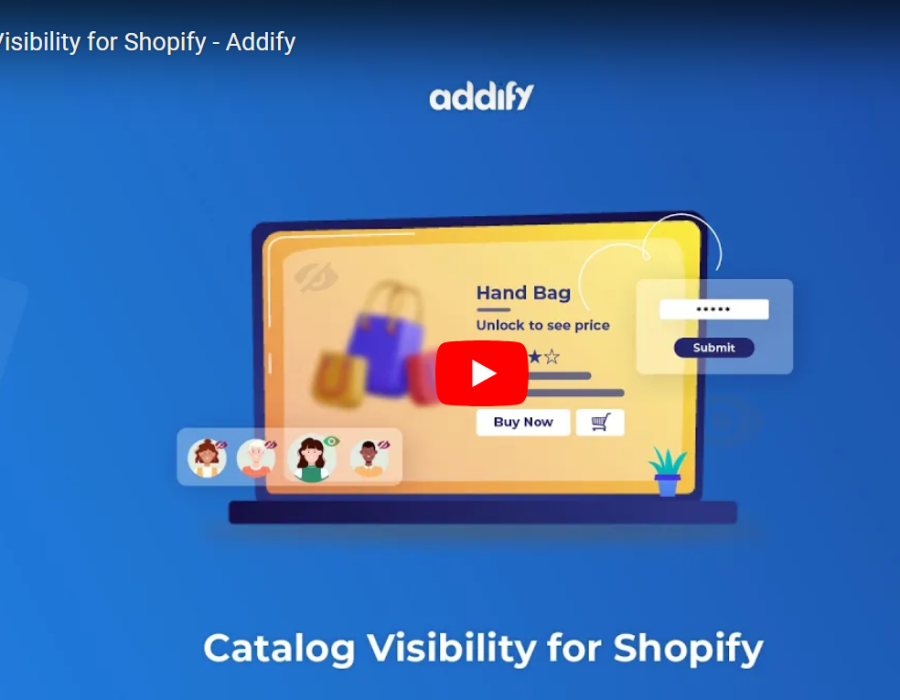Catalog visibility is a critical concept that can significantly influence a business’s sales, user experience, and overall success in ecommerce. Let’s dive into what catalog visibility means, how it works, and why it’s a vital aspect of managing an online store.
What is Catalog Visibility?
Catalog visibility refers to the control and customization of which products, categories, or attributes are visible to specific groups of users or customers on an e-commerce platform. It enables store owners to determine who can see particular items, based on factors like customer roles, geographic location, or purchase history.
Essentially, catalog visibility ensures that your online store shows the right products to the right audience at the right time. This feature is particularly valuable for businesses with diverse customer bases, such as B2B (business-to-business) and B2C (business-to-consumer) operations, where customers might have different needs, preferences, or purchasing power.
How Does Catalog Visibility Work?
Catalog visibility is typically managed through settings or plugins within an e-commerce platform. These tools allow store owners to set rules or restrictions for shopify product visibility. Here are a few examples of how catalog visibility can be applied:
- Customer Role-Based Visibility:
- Different products may be relevant for wholesalers versus individual consumers. Catalog visibility can restrict certain items to wholesale customers while hiding them from retail shoppers.
- Geographic Restrictions:
- Products that are only available in specific regions can be made visible only to users accessing the website from those locations.
- Membership or Subscription-Based Visibility:
- Members of a loyalty program or subscribers can see exclusive products or discounted pricing unavailable to regular visitors.
- Time-Sensitive Visibility:
- Products related to seasonal promotions or limited-time offers can be displayed during specific periods and hidden afterward.
Why is Catalog Visibility Important?
Catalog visibility is essential for several reasons, ranging from improving the customer experience to streamlining operations. Here are some key benefits:
1. Enhanced Customer Experience
Catalog visibility ensures that users see only the products that are relevant to them. By filtering out unnecessary or irrelevant items, businesses can create a seamless browsing experience, reducing confusion and improving satisfaction.
2. Targeted Marketing Opportunities
With catalog visibility, businesses can personalize promotions and highlight products based on customer segments. For instance, offering exclusive deals to VIP customers or displaying curated collections for specific audiences can boost conversions.
3. Streamlined Operations
By managing product visibility, businesses can avoid logistical challenges like processing orders for unavailable products in certain regions or ensuring compliance with legal restrictions for specific items.
4. Maximized Revenue Potential
Catalog visibility allows you to upsell or cross-sell more effectively by showing complementary products or higher-value items to customers likely to purchase them.
5. Improved Inventory Management
Hiding out-of-stock or discontinued products prevents customers from encountering unavailable items, enhancing trust and reducing frustration.
Applications in Different Business Models
1. B2B Stores
In B2B operations, pricing and availability often vary depending on the client. Catalog visibility allows businesses to tailor offerings for each client, showcasing bulk pricing or specific product lines.
2. B2C Stores
For retail customers, catalog visibility can enhance personalization. For instance, a clothing store might show winter collections to users in colder regions while highlighting summer wear for those in tropical climates.
3. Hybrid Models
Companies operating in both B2B and B2C spaces can use catalog visibility to differentiate their offerings for each group, creating tailored experiences without requiring separate platforms.
Challenges and Best Practices
While catalog visibility offers numerous benefits, it’s important to implement it carefully. Poorly configured visibility rules can lead to confusion or missed sales opportunities.
Best Practices:
- Use Clear Segmentation: Define customer roles and categories logically to ensure proper visibility rules.
- Test Settings Regularly: Periodically review visibility configurations to avoid errors or conflicts.
- Communicate Changes: Notify users when products become available or restricted to keep expectations clear.
- Leverage Analytics: Use data to refine visibility rules based on customer behavior and preferences.
Conclusion
Catalog visibility is more than just a feature; it’s a strategy that allows businesses to optimize their online stores for maximum efficiency, customer satisfaction, and profitability. By controlling which products are shown to specific audiences, companies can personalize the shopping experience, meet diverse needs, and improve operational efficiency.
Whether you’re running a B2B, B2C, or hybrid store, mastering catalog visibility is a crucial step toward e-commerce success.






Comments